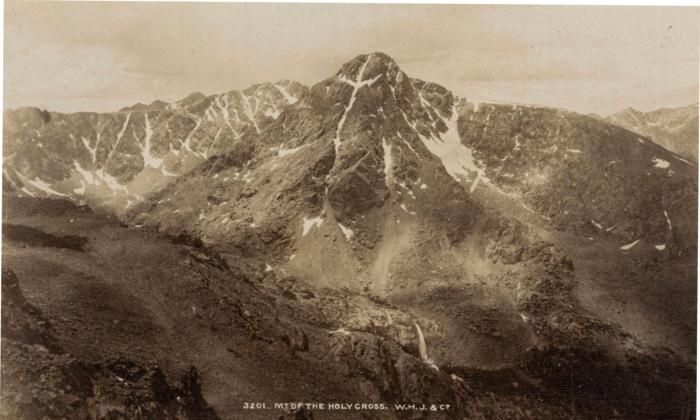When New York businessman George Jackson gave his son William Henry Jackson (1843–1942) a camera in the mid-1800s, photography was in its infancy. Neither father nor son knew how that gift would set the younger Jackson on a path to fame and fortune as one of America’s favorite landscape artists of the American West.
George provided the camera, but it was William’s mother Harriet, a talented painter, who taught William composition and style, instilling in him an appreciation of art.

Early Promise
At age 15, Jackson was hired as a retouching artist for a local photographer. It wasn’t until Jackson moved to Rutland, Vermont, to take a job with photographer Frank Mowry retouching photos and learning color tinting that the gifted young man was fully exposed to the photographic process.Jackson voluntarily interrupted his own career in 1862 when he enlisted to fight in the Civil War. He spent most of the war sketching camp life and mapping the countryside, though he was present at the Battle of Gettysburg in July 1863. After his enlistment expired and he returned to studio work, Jackson’s professional reputation grew rapidly.
He was briefly engaged to Caroline “Caddie” Eastman, but when Jackson took a job 60 miles away in Burlington for $25 a week, the pair soon parted ways. Humiliated by his broken engagement, Jackson decided to leave Vermont and seek his fortune out West.

Western Adventures
In 1867, Jackson got work at a photography gallery in Omaha, Nebraska. He later bought it and, along with his brother, turned it into the leading portrait studio in the city. Jackson was more drawn to landscapes and outdoors photography, however, and he began working outside the studio photographing the Union Pacific Railroad and the first-ever images of several local Native American tribes.The completion of the transcontinental railroad on May 29, 1869, proved fortuitous. It allowed Jackson to travel farther west and capture scenic images of many frontier outposts. He took hundreds of 8x10 negatives and stereoviews, the predecessor of today’s 3D images. Later that year, he was commissioned by E. & H.T. Anthony and Company, a photographic supplier, to provide 10,000 stereoviews of the American West.
About that same time, Jackson met Ferdinand V. Hayden, head of the U.S. Geological Survey. That acquaintance led to Jackson becoming the agency’s official photographer and resulted in the two assignments that made him famous.


Two Famous Works
During Jackson’s first summer as part of the U.S. Geological survey team in 1871, he made over 370 negatives, including photographs of Yellowstone’s geysers and waterfalls. His photos and paintings were credited with convincing President Ulysses S. Grant to designate Yellowstone as America’s first national park on March 1, 1872.In 1873, Jackson enjoyed another brush with fame when he became the first to photograph the famed Mount of the Holy Cross in Colorado. For years, the stories of an image of a holy cross embedded near the top of the rugged Sawatch Range of the Rocky Mountains was legendary among explorers.
To access the landmark, Jackson trudged along with a mule toting nearly 100 pounds of photographic equipment. It took two days of exhaustive climbing before he staggered across the shoulder of Notch Mountain. When the mist cleared, he saw the miracle made by nature.

“I emerged above the timberline and the clouds, and suddenly, as I clambered over a vast mass of jagged rocks, I discovered the great shining cross dead before me, tilted against the mountain side,” Jackson later recalled in his autobiography, “Time Exposure.” The image of a cross “glistened like polished silver in the mid-morning light” created by snow buried deep in the fissures against the surrounding gray rock.
Jackson’s photos of that landmark became a national sensation. His photo was formally presented to Congress and to President Grant, was commemorated as a U.S. postage stamp, and reproductions were prominently displayed in thousands of American parlors.


One Busy Bee
Jackson still had the shutterbug after leaving the U.S. Geological Survey in 1878. He opened a commercial photography studio in Denver and also helped promote rail travel by producing over 30,000 negatives for the railroad industry.In 1897 and for the next 27 years, he made mass-market postcards and stereoviews before resuming his painting career at age 81. In 1935, President Franklin Roosevelt hired the 92-year-old to paint four murals for the Department of Interior depicting “Great Surveys” of the American West.
The venerable photographer, painter, and explorer wrote and published more than 50 books, articles, and manuscripts over a career spanning 77 years. At age 99, he was laid to rest as one of the last Civil War veterans, and in 2002 he was posthumously inducted into the International Photography Hall of Fame.







